Lobsters are a type of shellfish that are popular in many different cuisines. They can be found in fresh, salt, and brackish water environments and are harvested for their meat. Lobster farming is the process of raising lobsters in captivity for commercial purposes. In this blog post, we will go through the steps involved in commercial lobster farming along with a lobster farming business plan.
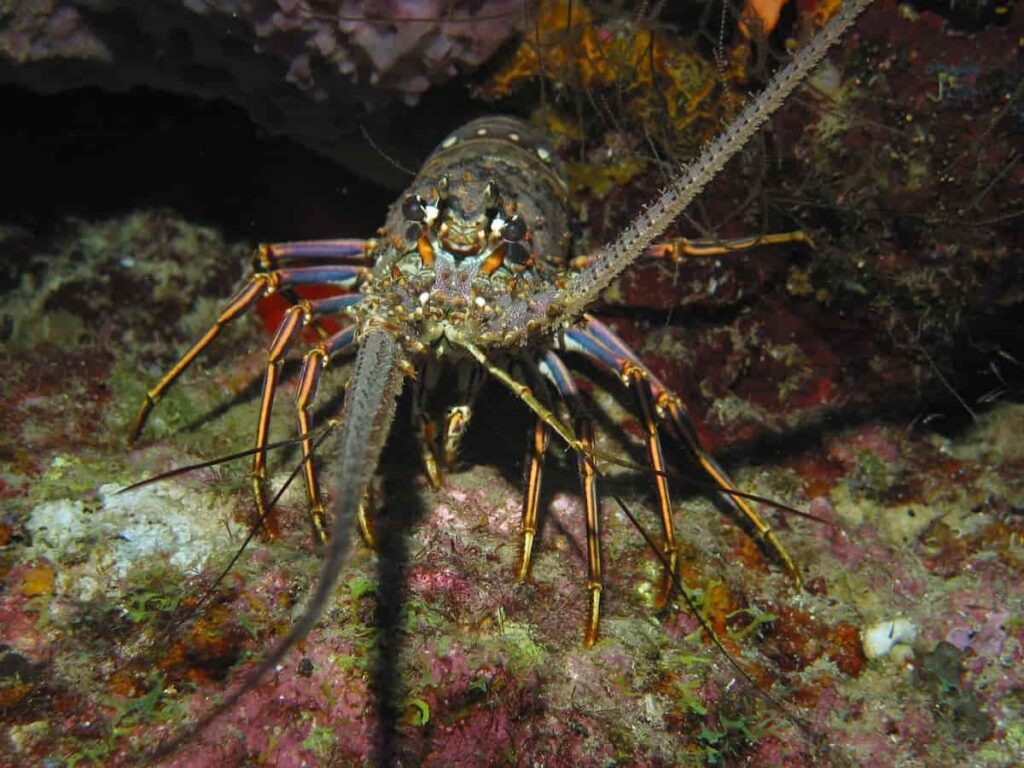
Lobster farming business plan
Advantages of the Lobster farming business
Lobster farming is a process of raising and harvesting lobster for commercial purposes. It is an efficient and sustainable way to produce lobster meat, requiring less space and fewer resources than wild-caught lobster farming. Lobster farming has several advantages over wild-caught lobsters:
- It is more efficient and sustainable.
- It requires less space and fewer resources.
- The lobsters are not exposed to the dangers of the open ocean, such as predators and pollution.
- The lobster farmer has more control over the quality of the lobster meat, as they can closely monitor the health and welfare of their lobster stock.
- Lobster farming provides year-round employment for those who work in the industry, whereas wild-caught lobster fishing is seasonal.
- Lobster farmers can choose organic methods of production, which are healthier for both the environment and the consumer.
How to start a Lobster farming business
Starting a lobster farming business can be a great way to enter the seafood industry. Lobster is a popular seafood item in high demand, so there is potential for a profitable business venture. However, before getting started, it is essential to do your research and develop a solid business plan. Here, you can find some tips and ideas on how to start a lobster farming business:
- Choose the right location: Lobsters need access to clean, salt water to thrive. Consider the climate and tides when selecting a location for your farm.
- Get the necessary permits: Before starting to operate, you must obtain the proper lobster farming licenses and permits from your local government.
- Purchase quality larvae: To have a successful farm, you must invest in quality lobster larvae. Work with a reputable supplier to ensure you are getting healthy specimens.
- Create a suitable habitat: Once you have your larvae, you must create an environment that mimics their natural habitat. This includes maintaining the correct water temperature and salinity levels.
- Monitor your lobsters: It is essential to regularly check on your lobsters to make sure they are healthy and growing properly. Be prepared to address any issues that may arise. Following these tips can set your lobster farming business up for success!
In case you missed it: Agricultural Business Plan: How to Start, and Profitable Ideas
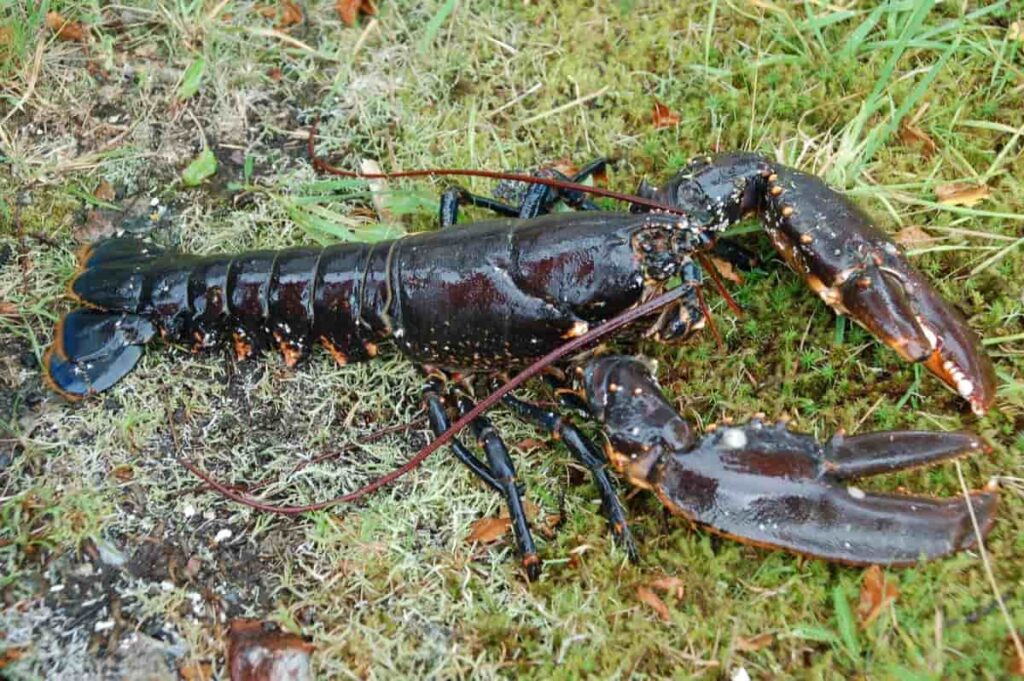
Choosing the best location for Lobster farming
It would be best to consider several factors when choosing a location for lobster farming. The first and most important factor is the quality of the water. The water must be clean and free of pollutants. It should also have a high salt content and a low pH. The second factor to consider is the temperature of the water. The ideal temperature for lobster farming is between 50 and 60 degrees Fahrenheit. The third factor is the availability of food.
Lobster feed must be available to maintain a healthy population of lobsters. The fourth factor is the availability of shelter. Lobsters need a safe place to hide from predators and to protect themselves from the elements. The fifth and final factor is the availability of transportation. Lobsters must be able to be transported to the market to sell them.
How to prepare a business plan for your Lobster Farming business
A business plan is an essential tool for any business, and a lobster farming business is no exception. Whether you’re just starting or have been in business for years, a well-crafted business plan can help you achieve your goals. A few key things to remember when preparing a business plan for your lobster farming business:
- Define your business goals and objectives. What do you want to achieve with this lobster farming business? What are your long-term and short-term goals? Be as specific as possible.
- Research the lobster market. What is the demand for lobster? How does this fluctuate throughout the year? What are the prices of lobster? This research will help you better understand the potential of your business.
- Develop a marketing strategy. How will you reach potential customers? What are your unique selling points? How will you differentiate yourself from the competition?
- Create a financial plan. Estimate your start-up costs, operating expenses, and projected revenue. This information will be essential in securing funding for your business.
- Put it all together. Organize your thoughts and research into a coherent business plan that will serve as a roadmap for your business. A well-crafted business plan is essential for any successful lobster farming business. By taking the time to research and develop a sound plan, you’ll be positioning yourself for success from the start.
Types of Lobster farming methods
Lobster farming is a type of aquaculture, or marine farming, in which lobsters are raised for human consumption. There are several different methods of lobster farming, each with its own benefits and drawbacks. The most common method of lobster farming is inshore farming. In this type of farming, lobsters are raised in cages or pens anchored to the ocean’s bottom. This method is less expensive than other lobster farming methods, allowing farmers to control the environment in which the lobsters are raised.
In case you missed it: Cinnamon Farming Business Plan: A Profitable Production Guide for Beginners
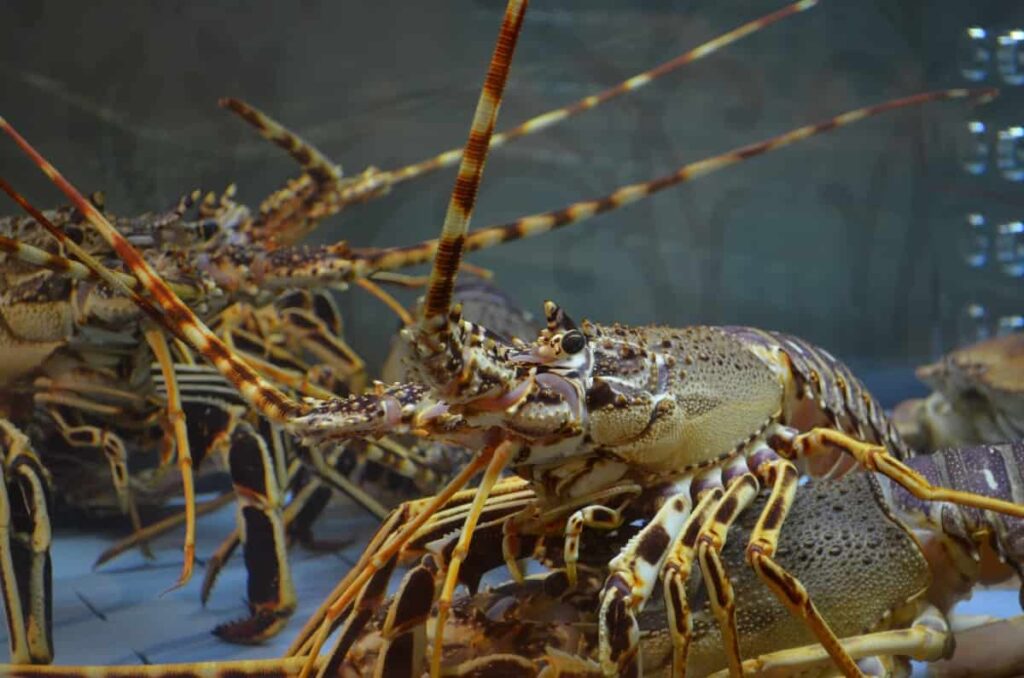
However, inshore farming can be more complex than other methods because it is more exposed to predators and bad weather. Offshore lobster farming is another standard method of fishing. In this farming, lobsters are raised in cages or pens that float on the ocean’s surface. This method is more expensive than inshore farming, but it is less exposed to predators and bad weather.
The third type of lobster farming is called long-lining. In this type of fishing, farmers attach lines to buoys and anchor them to the seafloor. The lines are baited with food, and lobsters are attracted to the bait and catch themselves on the line. This method is more expensive than inshore farming but cheaper than offshore farming. It also has the advantage of being less labor-intensive than other methods.
Selection of quality Lobster species for your farm
- You’ll want to make sure the lobsters are from a reputable source.
- You’ll want to check that the lobsters are in good health and have all their legs and claws.
- You’ll want to look for lobster species known to be good reproducers.
Some species are more disease-resistant, some grow faster, and some have a higher meat yield. When selecting a lobster species for your farm, it’s important to consider all of these factors to ensure you’re getting the best possible return on investment. Here are a few things and ideas to keep in mind when selecting a lobster species for your farm:
- Growth rate: One of the most important factors to consider when choosing a lobster species is its growth rate. Some species grow much faster than others, which can mean more profits for you over time.
- Disease resistance: Another important factor to consider is disease resistance. Some species are more resistant to diseases than others, which can help keep your costs down in the long run.
- Meat yield: Regarding profitability, meat yield is one of the most important factors. Some species have a higher meat yield than others.
- Price: Of course, price is also an important consideration when selecting a lobster species for your farm. You’ll want to ensure you get the best value for your money.
- Availability: Finally, you’ll want to make sure that the lobster species you select is readily available from suppliers
Where to buy Larvae for your Lobster farm
If you’re considering starting a lobster farm, one of the first things you’ll need to do is purchase larvae. Lobster larvae are tiny and fragile, so it’s important to find a reputable lobster supplier who can provide high-quality larvae with the best chance of surviving and thriving on your farm. There are a few different options for where to buy lobster larvae.
In case you missed it: Carrot Farming Business Plan: How to Grow from Seed to Harvest
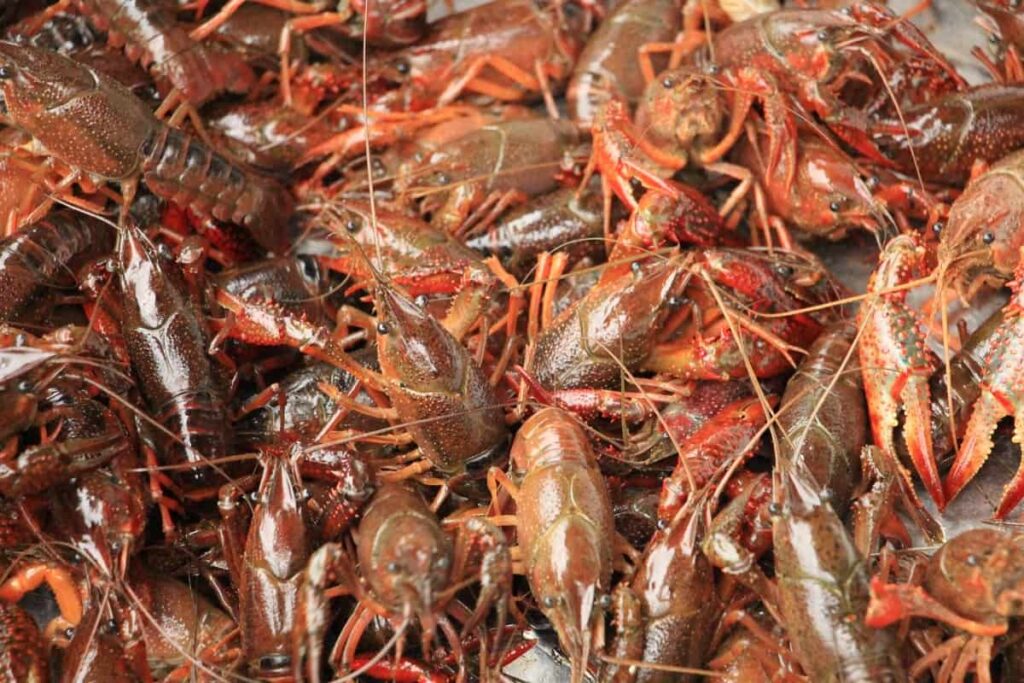
One option is to purchase them from an online supplier. Several online suppliers sell lobster larvae, and you can often find good deals and discounts if you buy in bulk. Another option is to contact a local lobster hatchery or marine research facility. Many of these facilities produce their own lobster larvae for research purposes, and they may be willing to sell or trade you some of their excess larvae.
Finally, you can also try to collect your own lobster larvae. This can be tricky, as it requires finding a wild female lobster ready to release her eggs. Once you’ve found a suitable lobster, you’ll need to carefully collect the eggs and bring them back to your farm. This option is often the most expensive, requiring additional equipment such as tanks and aerators.
Stocking your Lobster farm
There are a few different stocking methods for lobster farming, each with its own benefits and drawbacks. The most common method is purchasing juvenile lobsters from a hatchery, which can be costly. Another method is to capture wild juvenile lobsters and rear them in captivity, but this cannot be easy to do on a large scale. The most important factor to consider when stocking a lobster farm is the environment’s carrying capacity.
Overstocking will lead to overcrowding and poor water quality, which can stress the lobsters and make them more susceptible to disease. It is also important to consider the size of the lobsters you want to stock; smaller lobsters will grow faster and reach market size sooner than larger ones. When stocking a lobster farm, it is important to work with a reputable supplier who can provide healthy, disease-free juvenile lobsters. It is also important to Quarantine new arrivals and monitors them closely for signs of illness.
Feed management in Lobster farming
Lobster feed is one of the most important aspects of lobster farming. To have a successful lobster farm, it is essential to have good quality lobster feed. There are some things you should consider when choosing lobster feed. The first and foremost thing to consider is the type of feed. There are two types of feeds, dry and wet. Dry feeds are generally cheaper and easier to store, but they can be more difficult for the lobsters to digest.
Wet feeds are more expensive, but they are easier for the lobsters to digest and provide more nutrients. The second thing to consider when choosing a lobster feed is the ingredients. It is important to choose a feed with high-quality ingredients that will provide the lobsters with the nutrients they need. Some of the most important nutrients for lobsters are protein, calcium, and iodine. The third thing to consider when choosing lobster feed is the price.
In case you missed it: Shrimp Farming Business Plan: Every Aqua Farmer Should Know Before Getting Started
Lobster feed can be expensive, so it is important to balance quality and price. Many brands of lobster feed on the market, so it is important to research to find the best value for your money. The storage conditions are the fourth thing to consider when choosing lobster feed. The lobster feed should be stored in a cool, dry place out of direct sunlight. It is also important to keep the lobster feed away from other food sources so that the lobsters do not become contaminated with bacteria.
Breeding in Lobster farming
Breeding takes place in hatcheries, where eggs are incubated and larvae are reared. Lobsters are bred using various methods, including natural selection, cross-breeding, and in vitro fertilization. Lobsters are naturally resistant to many diseases, but they can become susceptible to new diseases over time.
Bowing them for resistance to new diseases is important to keep lobsters healthy. This can be done by selecting lobsters resistant to a specific disease, then breeding them with each other. Cross-breeding is another method that can be used to produce disease-resistant lobsters.
This involves breeding two different species of lobster together. The resulting offspring will have the resistance of both parent species. In vitro fertilization is a third option for breeding lobsters. This process involves fertilizing the eggs outside the body in a laboratory setting. In vitro fertilization can be used to create embryos that are resistant to disease or have other desired characteristics.
How to care for your Lobsters
If you have your own lobster farm, it’s essential to know how to care for your lobsters properly so they stay healthy and productive. Here are some tips and techniques on how to care for your lobsters on your farm:
- Keep them in a clean and well-aerated environment. Lobsters need clean water to live in and plenty of oxygen to breathe. Be sure to check and clean their tanks or ponds regularly, and aerate the water if needed.
- Feed them a balanced diet. In general, lobsters are scavengers and will eat just about anything, but you should still provide them with a balanced diet of seafood, vegetables, and other marine life. This will ensure they get all the nutrients they need to stay healthy.
- Monitor their health closely. Be on the lookout for signs of disease or illness, such as lethargy, unusual behavior, or changes in appearance. If you notice any of these things, consult a veterinarian immediately.
- Handle them with care. Lobsters are delicate creatures and can easily be injured if not handled properly. Support their body from underneath and avoid squeezing them too tightly when handling them. Following these tips and techniques ensures that your farm’s lobsters remain healthy and productive.
How and When to harvest your Lobsters
The lobster harvesting season generally runs from late spring through early fall. However, the exact timing depends on the region where you’re fishing. In general, it’s best to wait until the water temperatures have risen and the lobsters are actively feeding before heading out to harvest your catch.
In case you missed it: Bamboo Farming Business Plan: How Bamboo Could be the Next Eco-Friendly Business
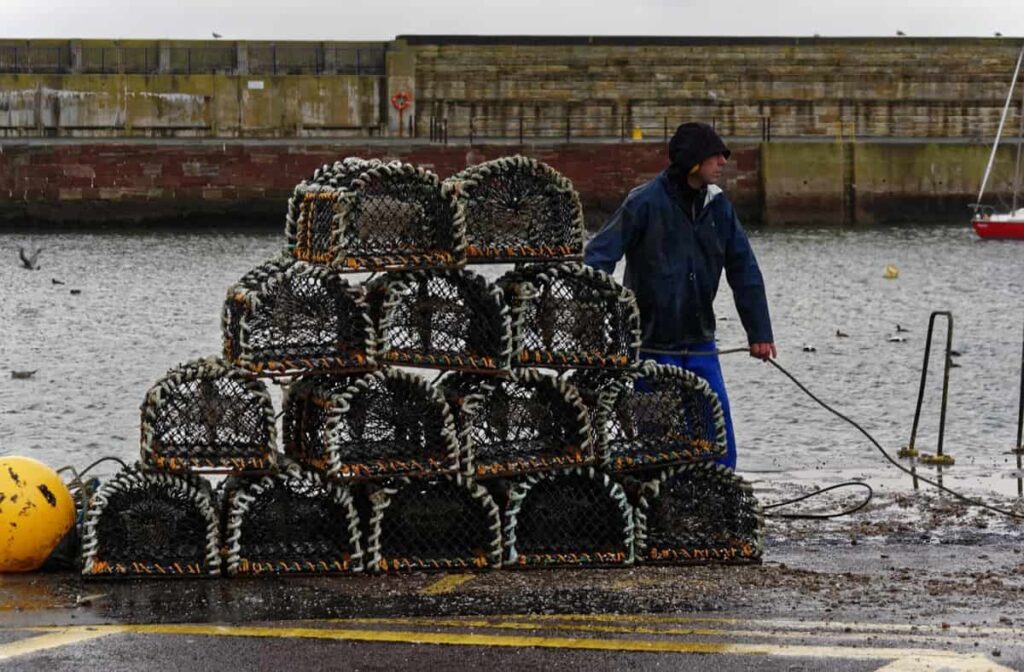
When you’re ready to start harvesting, there are a few things to keep in mind. First, check the local regulations in your area to ensure you’re following all the rules. Next, using the right gear is essential to avoid damaging the lobster or harming yourself. There are two main methods of lobster harvesting: hand harvesting and trap harvesting. Hand-harvesting is the more traditional method and involves simply using your hands to grab the lobster from its hiding place.
This method is more labor intensive but results in less damage to the lobster. Trap-harvesting is the more common method nowadays and involves using a special trap to catch the lobster. The traps are baited with food to lure the lobster inside, and then they’re pulled up to the surface where they can be collected. This method is less labor intensive but can result in more damage to the lobster.
Yield in Lobster farming
There is no exact answer to this. Lobster farming is the process of raising lobsters in captivity for human consumption. Therefore, the yield from a lobster farm can vary greatly depending on the type of lobster being raised, the quality of the environment, and the level of care and attention given to the lobster crop.
How to market your Lobsters
To market your lobsters, you’ll need to take a few key steps: 1. Research the lobster market and find out where there is demand for your product. This will help you target your marketing efforts and ensure that you sell your lobsters to the right buyers. 2. Develop a marketing strategy that will allow you to reach your target market.
This strategy should include pricing, packaging, and promotional activities. 3. Implement your marketing strategy and track your results. Finally, monitor your sales and customer feedback to adjust your strategy. Following these steps, you can successfully market your lobsters and maximize profits.
Conclusion
Lobster farming is a sustainable and environmentally friendly way to produce lobster. You can also check your local marine or fishery department for subsidies and low-interest loans for your farm. You can get excellent profits in Lobster farming with proper care and a business plan.
- Management Pests and Diseases in Your Cotton Field
- Sheep Farming Business Plan for Beginners
- Aquaponic Farming at Home: A Step-By-Step Guide
- Profitable Village Farming Business Ideas in 2024
- High-Yield Aquaculture: Fast-Growing Fish for Farming
- Effective Fish Pond Construction Techniques for Beginners
- Irrigation and Water Management in Pineapple Farming
- Blossom to Harvest: Mastering Flowering and Pollination in Papaya Farming
- Pig Fattening Essentials: From Selection to Sale for Beginners
- Raising Wagyu Cattle: A Complete Guide for Premium Beef Production
- Soil Types and Their Water Holding Capacity
- Optimizing Irrigation Schedules for Coconut Groves for Enhanced Yield
- Espresso Your Garden: Coffee Grounds for Healthier Acid-Loving Plants
- The Best Soil Mix for Snake Plants: How to Mix Your Own Snake Plant Soil
- Green Thumb Success: Expert Tips for Cultivating Greenhouse Beans All Year Round
- Bloom All Year Round: The Ultimate Guide to Indoor Hyacinth Care
- Eco-Friendly Gardening: How to Make Liquid Fertilizer from Kitchen Waste
- Ultimate Guide to Grow Anise in Pots: Explore Seed Propagation to Harvesting
- Guide to Raising Chester White Pigs: Discover Breed Facts to Growth Management
- Mastering the Elegance: The Ultimate Guide to Weeping Cherry Tree Care, Planting, and Maintenance
- Ultimate Guide to Planting Garlic in Grow Bags: Growing Strategies for Beginners
- How to Fix Spider Plant Leaf-Related Problems: Natural and Organic Remedies
- 10 Reasons Why Your Tulsi Plant is Shedding Leaves: Home Remedies and Solutions
- Optimizing Growth and Yield: The Advantages of Palm Bunch Ash Fertilizer
- Utilizing Neem Oil Extract as a Natural Pesticide for Hydrangea
- From Soil to Harvest: Various Ways in Which Farmers Can Use AI Tools
- Steps to Encourage and Induce Citrus Flowers: A Comprehensive Guide
- How to Fix Snake Plant Leaf-Related Issues: Natural and Organic Remedies
- Transform Your Garden into a Fragrant Oasis with Raat Ki Rani (Night Blooming Jasmine)
- Discover the Ideal Chicken Breeds for Philippine Farms
- How to Create a Poultry Egg Farm Business Plan for Profits
- Grow Lemon Cucumbers Like a Pro: Insider Techniques for Bountiful Yields
- Ultimate Guide to Caring for Your Pink Princess Philodendron: Tips for Thriving Variegation
- Areca Nut Profit Per Acre: Calculating Yield and Cost of Cultivation
- How Kaveri Chicken is Becoming a More Profitable Breed in Indian Backyards
- Transform Your Barn: 9 Steps to Convert a Horse Stall into a Chicken Coop

